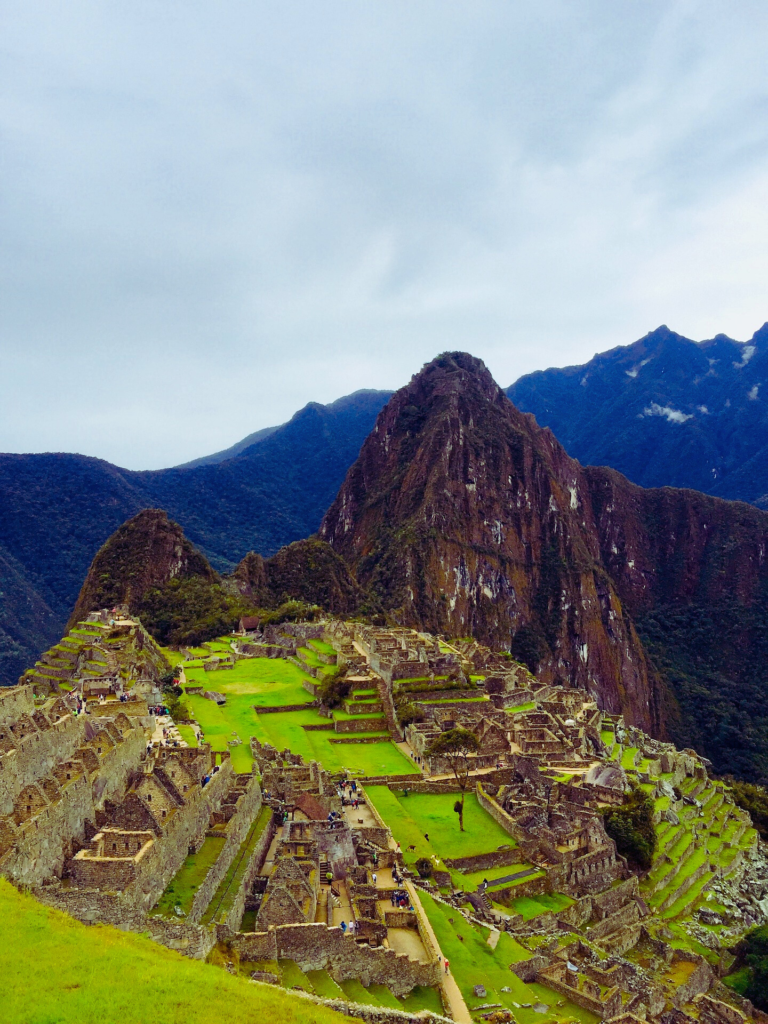The Inca Trail
Imagine you’re standing at the foot of a mountain in Peru, looking up at the rugged peaks that stretch high into the sky. You can feel the cool, crisp air filling your lungs, the anticipation building as you lace up your boots. Ahead of you lies the Inca Trail, one of the most legendary treks in the world, a path that will lead you through history, nature, and breathtaking landscapes, all the way to the ancient city of Machu Picchu.
The Inca Trail isn’t just a hike; it’s a journey back in time. As you step onto the stone path, you’re following the footsteps of the Inca Empire, which once stretched across South America, connecting cities, people, and cultures. The stone steps you tread were built centuries ago, and as you walk, you can almost hear the whispers of the past—the sound of ancient rituals, the footfalls of traders and messengers, and the echoes of a civilization that flourished in these very mountains.

Day 1: Setting Foot on the Path of the Ancients
The first day is filled with excitement as you take a bus from Cusco to Kilometer 82, the official starting point of the trek. You take in the view of the Urubamba River, winding below, and the towering mountains ahead. As you pass the first Incan site, Patallacta, you can almost feel the spirit of the Incas lingering in the air, watching over you. It’s a relatively easy day, but every step feels like a step closer to something greater, something ancient.
Day 2: The Ascent to Dead Woman’s Pass
Day two comes as a challenge, the hardest part of the entire trek. The trail begins to climb steeply as you make your way towards Dead Woman’s Pass, the highest point on the trail at 4,215 meters (13,828 feet) above sea level. The air is thin, and each step becomes heavier. But with every upward push, there’s a reward: the vast, panoramic views of the valley below, the snow-capped peaks in the distance, and a profound sense of connection with this ancient land. When you finally reach the top, the sense of accomplishment is immense. You stand there, breathless but triumphant, looking down at the world below, knowing that you’ve just conquered one of the toughest parts of the trail.
Day 3: Into the Cloud Forests
The third day brings a change in the landscape. As you descend, the air becomes warmer and fresher. You enter the cloud forest, a lush, green world where waterfalls cascade down the mountainsides and the sounds of the jungle echo around you. You stop to rest by the ruins of Wiñay Wayna, an ancient Incan site that’s almost hidden within the jungle, its terraces and stone structures covered in moss and vines. The history of this place wraps around you like the forest itself, and you can almost feel the presence of those who once lived here.
Day 4: The Final Push – Sunrise at Machu Picchu
The final day is filled with anticipation. You wake up in the dark, before the first light of dawn, knowing that the grand finale of this incredible adventure awaits. With each step, your excitement grows. The trail narrows, and as you reach Inti Punku, or the Sun Gate, the first rays of the sun spill over the mountains. Below you, nestled in the valley, is Machu Picchu—its ancient stone structures bathed in golden light. It’s a moment that takes your breath away, as you stand there, in awe, realizing that you’ve just hiked one of the most iconic trails in the world to reach one of the greatest wonders of the ancient world.
The Journey of a Lifetime
But the Inca Trail is more than just a hike. It’s a journey of discovery. Along the way, you encounter the Quechua communities, the descendants of the Incas, who still live in the remote villages you pass by. You share smiles, exchange greetings, and for a moment, you feel like part of something much bigger than yourself—a lineage that stretches back centuries.
Every step on the trail tells a story. Whether it’s the ancient ruins that stand as a testament to the ingenuity of the Incas, the majestic mountains that rise up like silent guardians, or the deep, rich history of the land, the Inca Trail is a story that unfolds with every twist and turn. And when you finally reach Machu Picchu, you realize that it’s not just the destination that’s important—it’s the journey that brought you here.
Overview of the Inca Trail
- Length: About 26 miles (42 kilometers).
- Duration: 4 days and 3 nights (though there are alternative routes).
- Difficulty: Moderate to challenging, with altitude changes and steep sections.
- Best Time to Visit: April to October (the dry season), as the trail is closed for maintenance during the rainy season (February).
1 thought on “The Inca Trail”